GCSE - ASTRONOMY (Topic1)
0.0(1)
0.0(1)
Card Sorting
1/62
Earn XP
Study Analytics
Name | Mastery | Learn | Test | Matching | Spaced |
|---|
No study sessions yet.
63 Terms
1
New cards
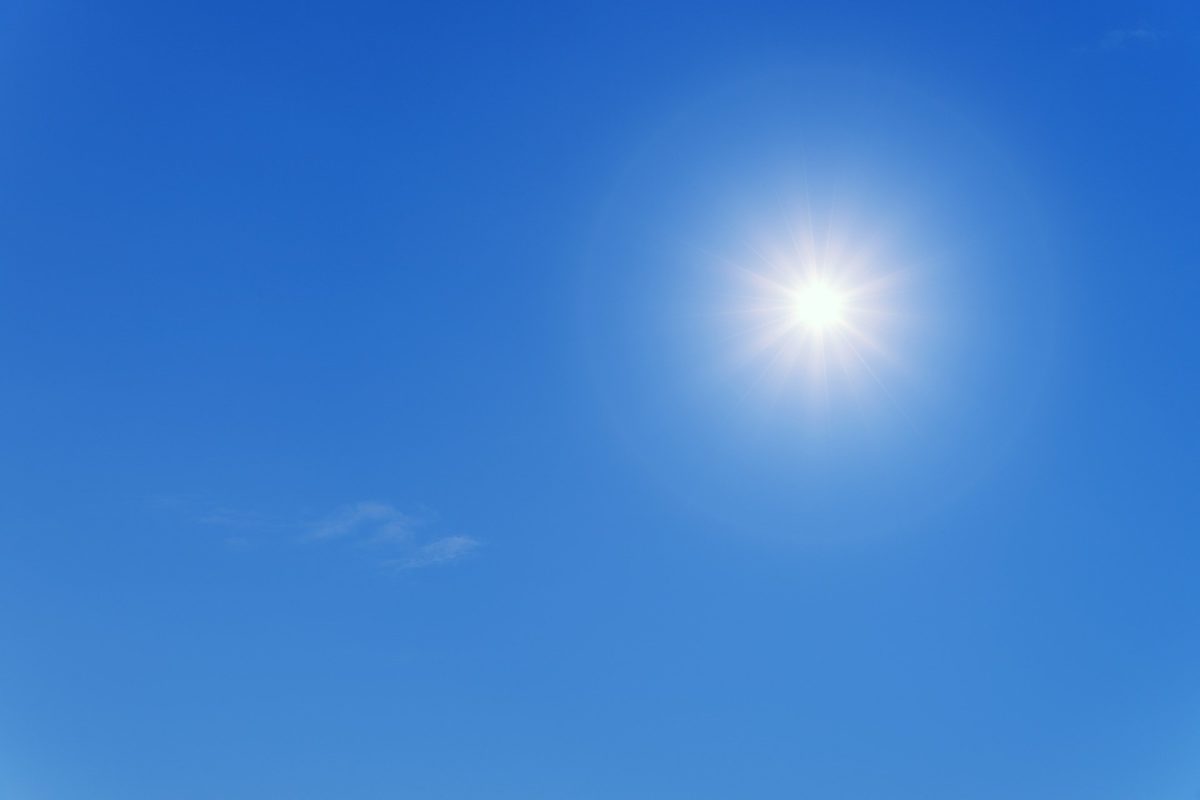
Why is the sky blue?
Because of the selective scattering (‘Rayleigh scattering’) of the shorter, bluer wavelengths of sunlight by gas molecules in the atmosphere

2
New cards
Describe the key features that distinguish the Earth from other planets in the Solar System.
* Its atmosphere of mainly oxygen and nitrogen,
* liquid water (covering about 70% of its surface),
* life in all its diverse forms.
* liquid water (covering about 70% of its surface),
* life in all its diverse forms.
3
New cards
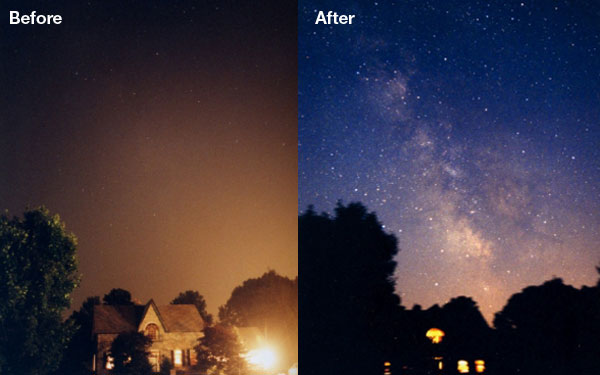
State the major causes of light pollution.
* Commercial and sports floodlights,
* urban streetlights and motorway lights,
* domestic and industrial security lamps
* urban streetlights and motorway lights,
* domestic and industrial security lamps
4
New cards
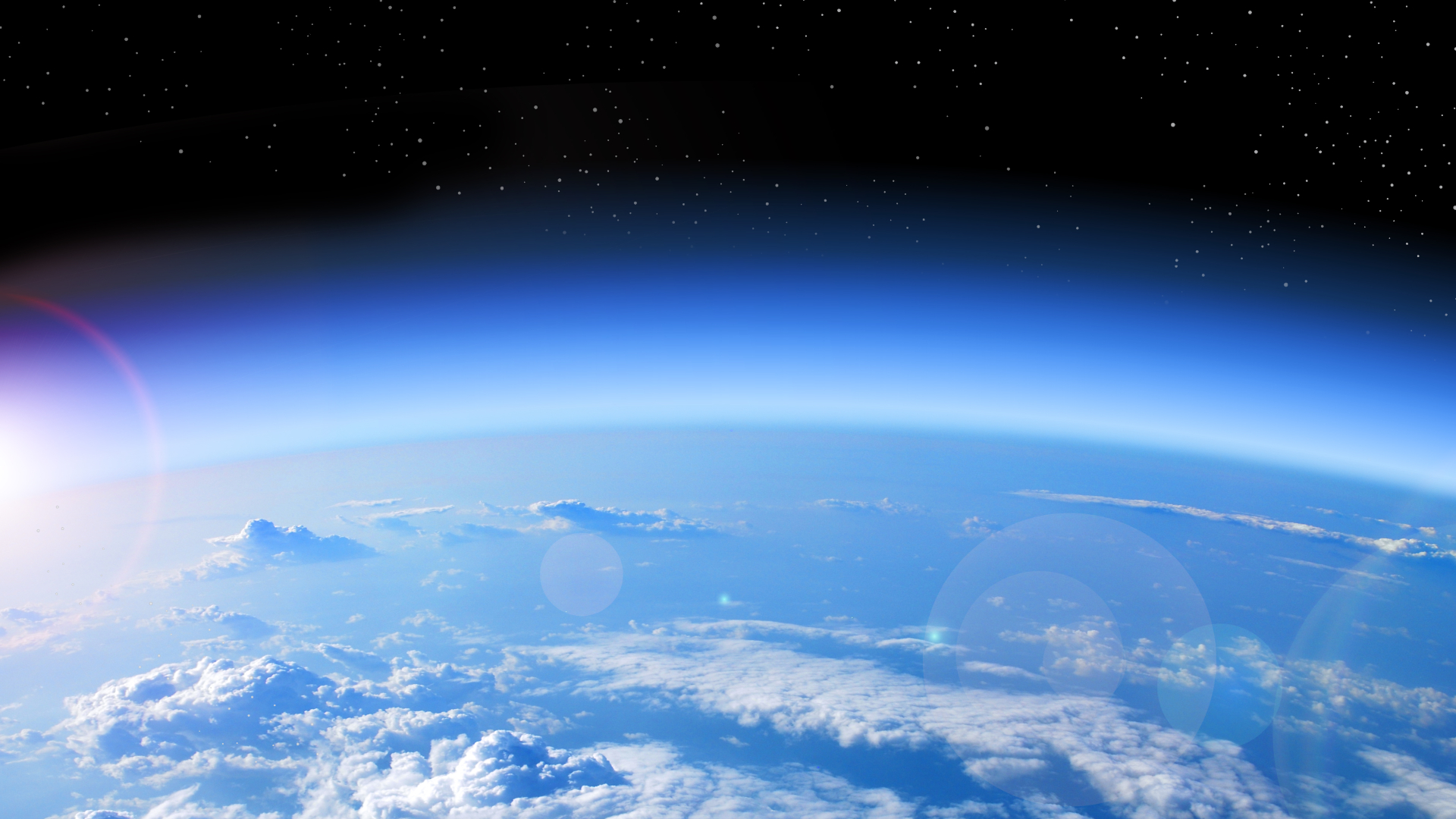
Describe the benefits of the Earth’s atmosphere to humankind.
* It absorbs harmful solar UV, X-ray and gamma radiation;
* it regulates the temperature, so we rarely experience ‘extremes’;
* it provides us with oxygen to breathe;
* it partially protects us from meteoroids.
* it regulates the temperature, so we rarely experience ‘extremes’;
* it provides us with oxygen to breathe;
* it partially protects us from meteoroids.
5
New cards
State the shape and diameter of the Earth.
* Average diameter of 13 000 km,
* slightly flattened (by 42 km) at the poles,
* making it an **oblate spheroid**.
* slightly flattened (by 42 km) at the poles,
* making it an **oblate spheroid**.
6
New cards
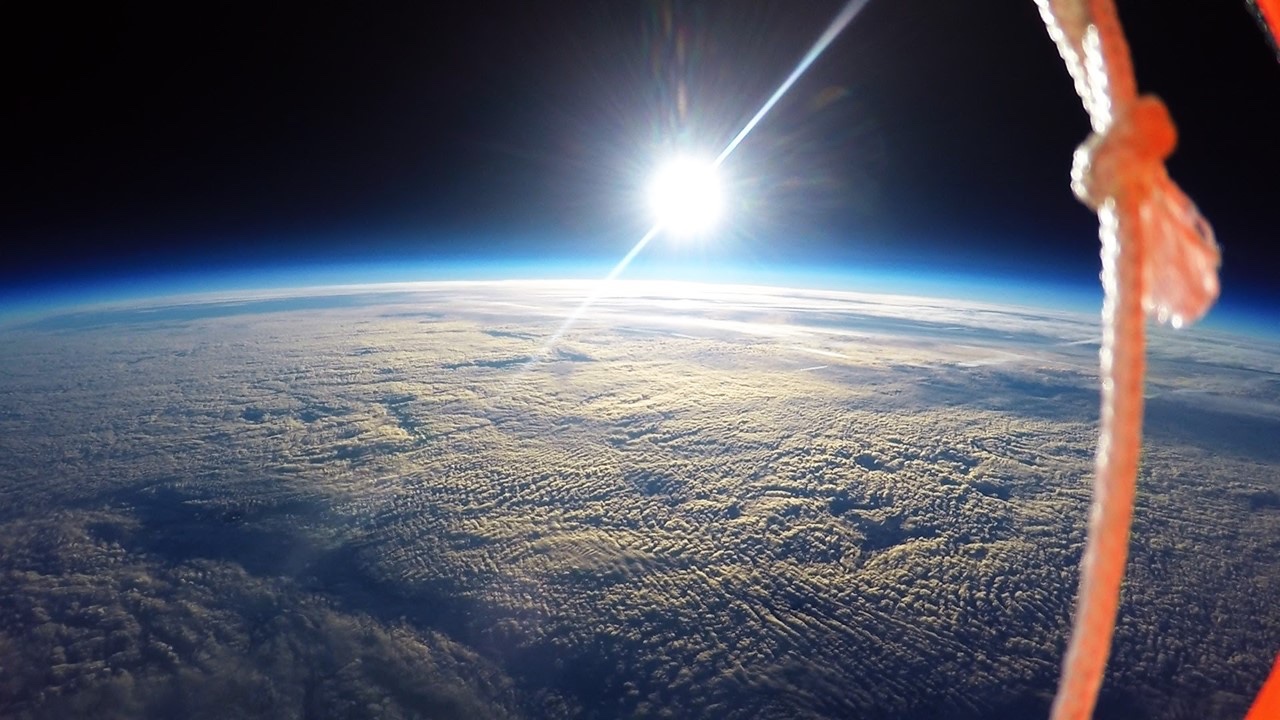
Describe the evidence that the Earth is approximately spherical.
* Ships disappear over the horizon,
* satellites orbit the Earth,
* the curvature of the Earth’s shadow during a partial lunar eclipse,
* aircraft fly in arcs rather than straight lines,
* images of Earth from space.
* satellites orbit the Earth,
* the curvature of the Earth’s shadow during a partial lunar eclipse,
* aircraft fly in arcs rather than straight lines,
* images of Earth from space.
7
New cards
State the rotation period of the Earth and the time to rotate through 1 degree.
* Rotation period 23 h 56 min ,
* time to rotate through 1 degree = 4 min.
* time to rotate through 1 degree = 4 min.
8
New cards
Define the terms: equator, tropic
* **Equator** = the circle around the Earth an equal distance from either pole.
* **Tropic of Cancer** = line of latitude of 23.5°N;
* **Tropic of Capricorn** = line of latitude of 23.5°S
* **Tropic of Cancer** = line of latitude of 23.5°N;
* **Tropic of Capricorn** = line of latitude of 23.5°S
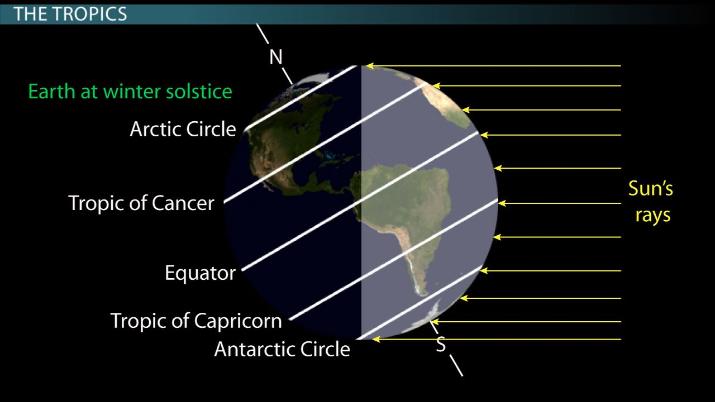
9
New cards
Define the terms: latitude, longitude.
* **Latitude** = the angle above or below the equator.
* **Longitude** = the angle East or West of the Greenwich Meridian.
* **Longitude** = the angle East or West of the Greenwich Meridian.

10
New cards
Define the terms: pole, horizon.
* **Poles** = the northern and southern points of the axis on which the planet rotates.
* **Horizon** = the outer ring of the Earth’s surface, at 90° to the zenith line.
* **Horizon** = the outer ring of the Earth’s surface, at 90° to the zenith line.
11
New cards
Define the terms: meridian, zenith.
* **Meridian** = imaginary lines drawn from pole to pole through a place of interest, e.g. the Prime Meridian through Greenwich.
* **Zenith** = the point in the sky directly above the observer.
* **Zenith** = the point in the sky directly above the observer.
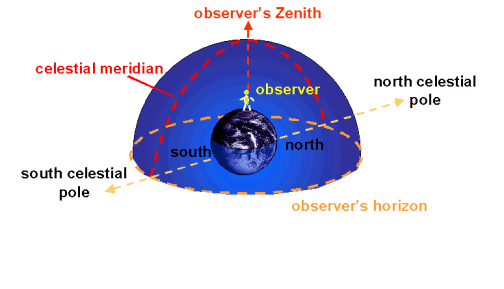
12
New cards
What are the **drawbacks** to astronomers of the Earth’s atmosphere?
* Refraction of light through the turbulent atmosphere causes stars to scintillate and restricts resolution;
* Rayleigh scattering prevents daytime observation;
* most EM wavelengths absorbed.
* Rayleigh scattering prevents daytime observation;
* most EM wavelengths absorbed.
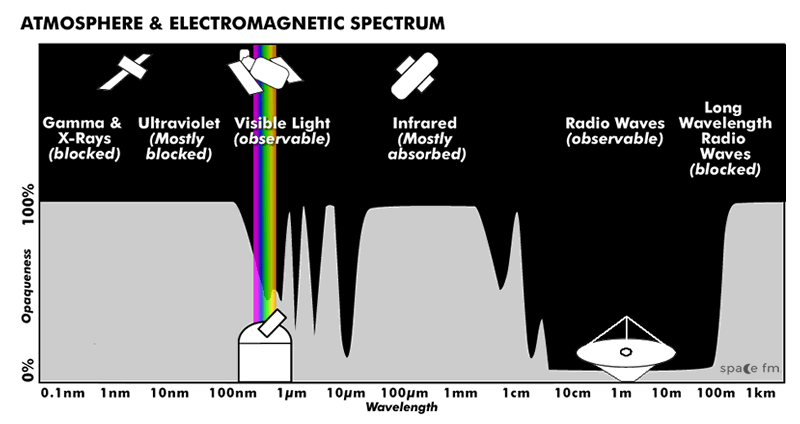
13
New cards

What is the difference between a refracting and reflecting telescope?
* **Refractor** = a glass **convex lens** collects the light and brings it to a focus.
* **Reflector** = a curved **mirror** (or one made from several segments) collects the light.
* **Reflector** = a curved **mirror** (or one made from several segments) collects the light.
14
New cards

What are the advantages of large telescopes over smaller ones?
* They can **collect more light** in proportion to area,
* and they have **better resolution** in proportion to diameter.
* and they have **better resolution** in proportion to diameter.
15
New cards
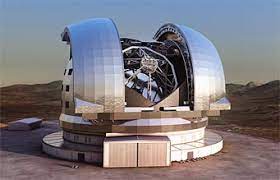
Why are most large telescopes reflectors, not refractors?
Large mirrors can be manufactured and engineered to a much higher precision than lenses (that are heavy and difficult to support).
16
New cards
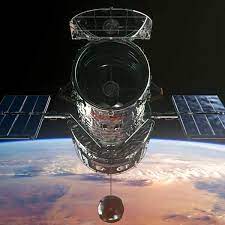
What are some disadvantages to space telescopes?
* Reduced lifetime,
* difficult or impossible maintenance / repairs /upgrades,
* more expensive to build and launch into orbit.
* difficult or impossible maintenance / repairs /upgrades,
* more expensive to build and launch into orbit.
17
New cards
Which wavelengths of light is the Earth’s atmosphere transparent to?
* Visible light,
* microwaves and
* some radio waves.
* microwaves and
* some radio waves.

18
New cards
Where are radio, infrared, UV and X-ray telescopes located?
* **Radio telescopes** can be at **sea level**.
* **Infrared telescopes** need to located atop **high mountains**.
* **UV and X-ray telescopes** need to be located in **space**.
* **Infrared telescopes** need to located atop **high mountains**.
* **UV and X-ray telescopes** need to be located in **space**.
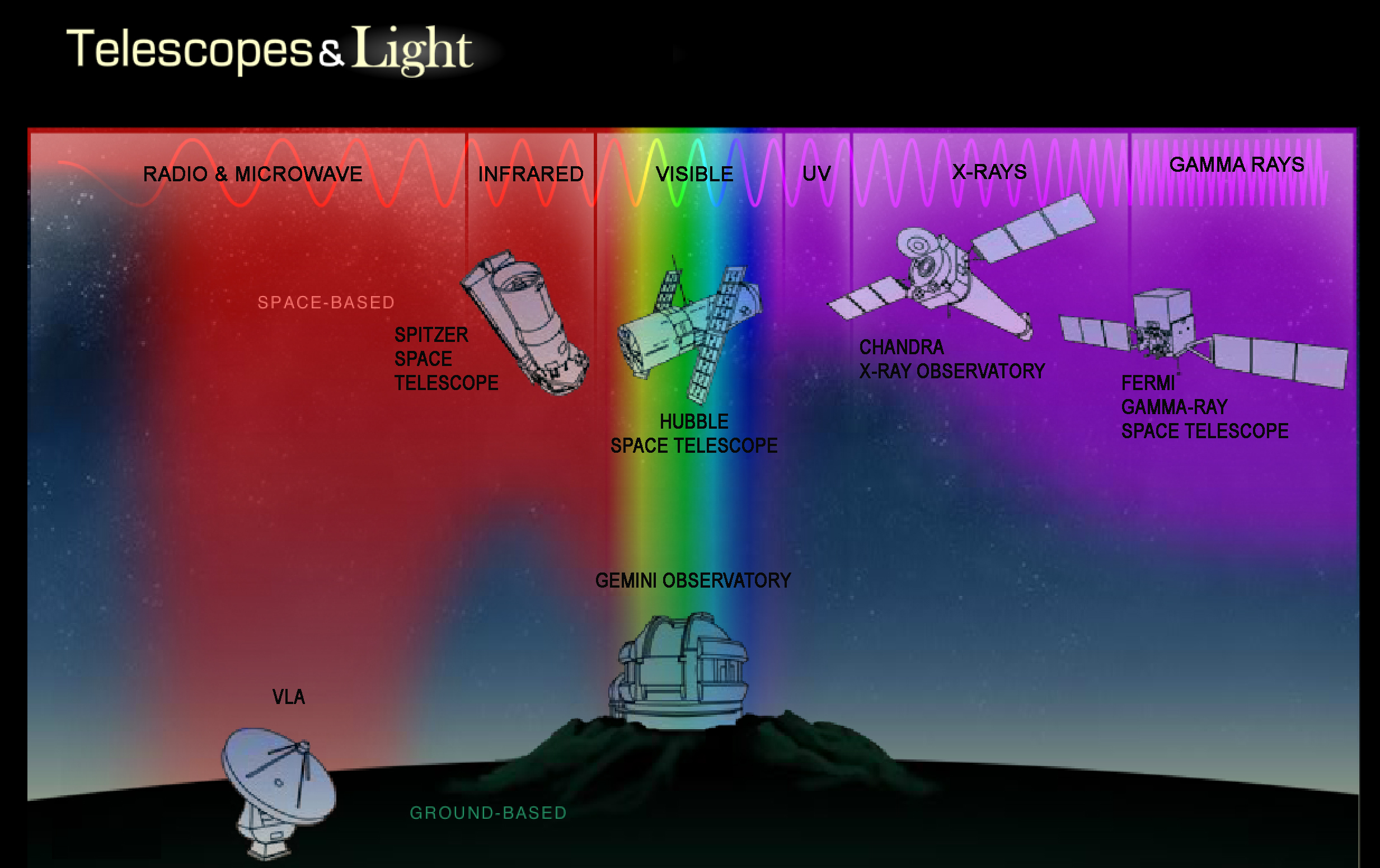
19
New cards
What are the Van Allen belts?
Two doughnut-shaped rings of spiralling high-energy particles held in place high above the Earth’s equatorial region by the Earth’s magnetic field.

20
New cards
How were the Van Allen belts discovered?
Inner belt (January 1958), using a Geiger counter aboard the US satellite Explorer 1. Outer belt (December 1958) using similar instruments aboard the US lunar probe Pioneer 3.
21
New cards
State the lunar features you are required to know for the GCSE Astronomy specification
* Sea of Tranquillity,
* Ocean of Storms,
* Sea of Crises,
* the Apennine mountain range,
* the craters Tycho,
* Copernicus and
* Kepler.
* Ocean of Storms,
* Sea of Crises,
* the Apennine mountain range,
* the craters Tycho,
* Copernicus and
* Kepler.
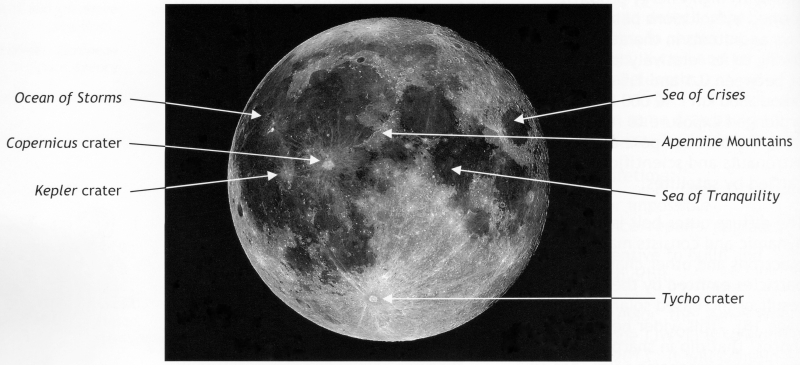
22
New cards
What is the Moon’s diameter and approximate distance from the Earth?
* Diameter of **3,500 km**,
* approximate distance of **380,000 km**.
* approximate distance of **380,000 km**.
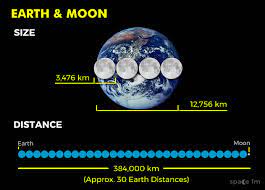
23
New cards
What are the Moon’s rotational and orbital periods?
They are **both 27.3 days**.

24
New cards
Why is the far side of the Moon not visible from Earth?
Because the Moon’s rotational period is the same as its orbital period (both 27.3 days).
25
New cards
How do we know what the far side of the Moon looks like?
* First observed by the unmanned Soviet probe **Lunik 3** (October 1959).
* The first humans to observe it were the **Apollo 8** astronauts (December 1968).
* The first humans to observe it were the **Apollo 8** astronauts (December 1968).
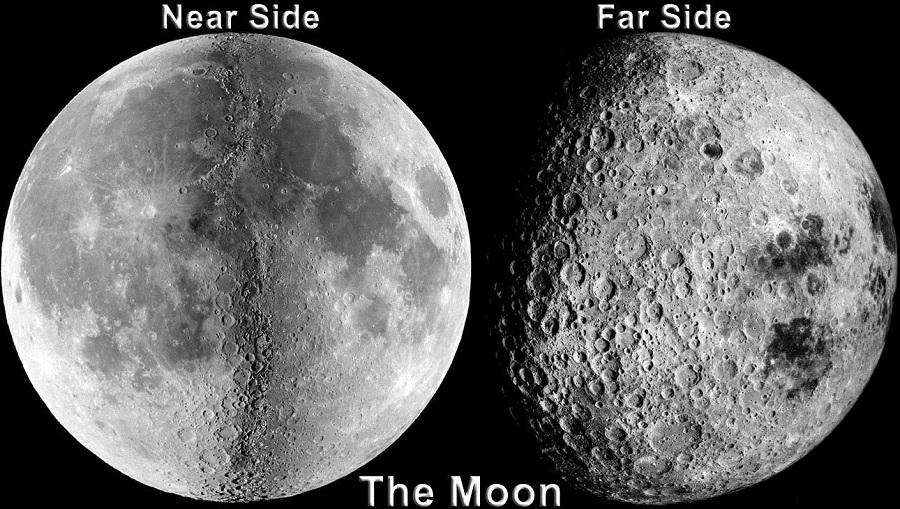
26
New cards
How is the far side of the Moon different from the near side?
* The far side is **almost devoid of seas** (The Eastern Sea, Mare Orientale being the only notable exception)
* and is **almost entirely mountainous**
* and **heavily-cratered**.
* and is **almost entirely mountainous**
* and **heavily-cratered**.
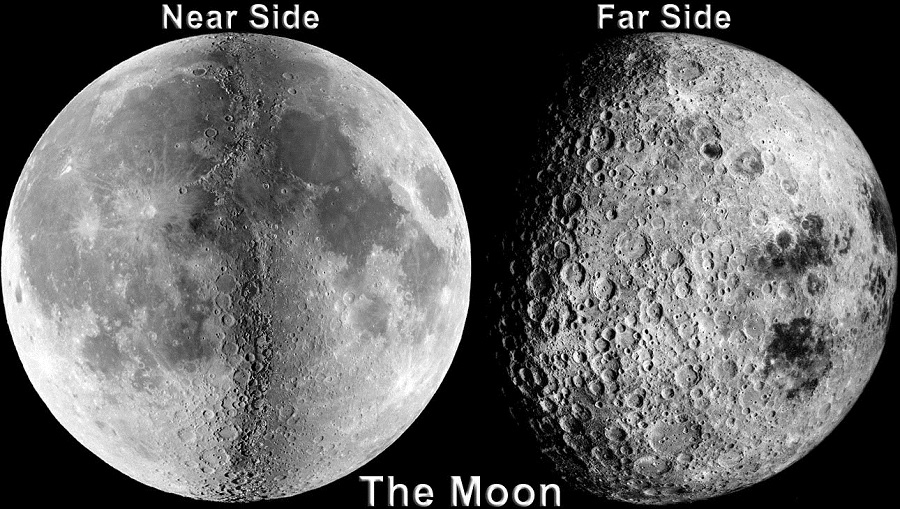
27
New cards
What is the difference between maria and terrae?
* @@**Maria**@@ = Large, dark-grey, relatively smooth lunar seas made of iron-rich basaltic rock.
* @@**Terrae**@@ = lighter-grey, mountainous, high-cratered highlands composed of anorthosite, a course-grained igneous rock.
* @@**Terrae**@@ = lighter-grey, mountainous, high-cratered highlands composed of anorthosite, a course-grained igneous rock.
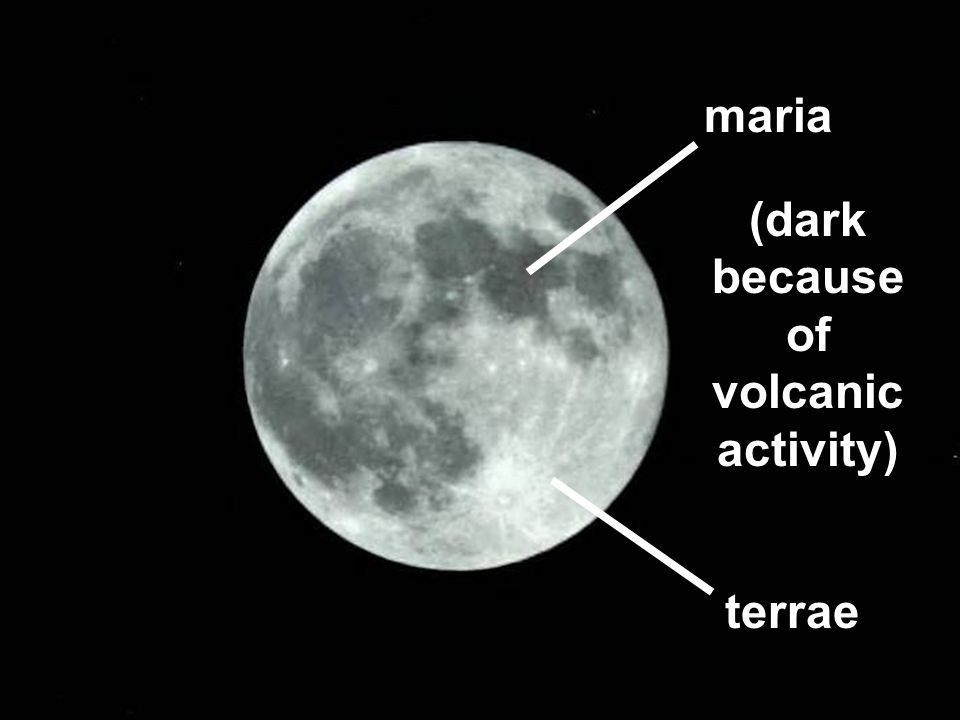
28
New cards
What does the relative number of craters in the maria and terrae imply about their relative ages?
The relatively small number of craters in the maria suggest that they are much younger in age.
29
New cards
What are rilles?
Thought to have been caused by the buckling of the lunar surface as a result of compressive forces within the cooling, contracting lava, forming ridges up to hundreds of kilometres long.
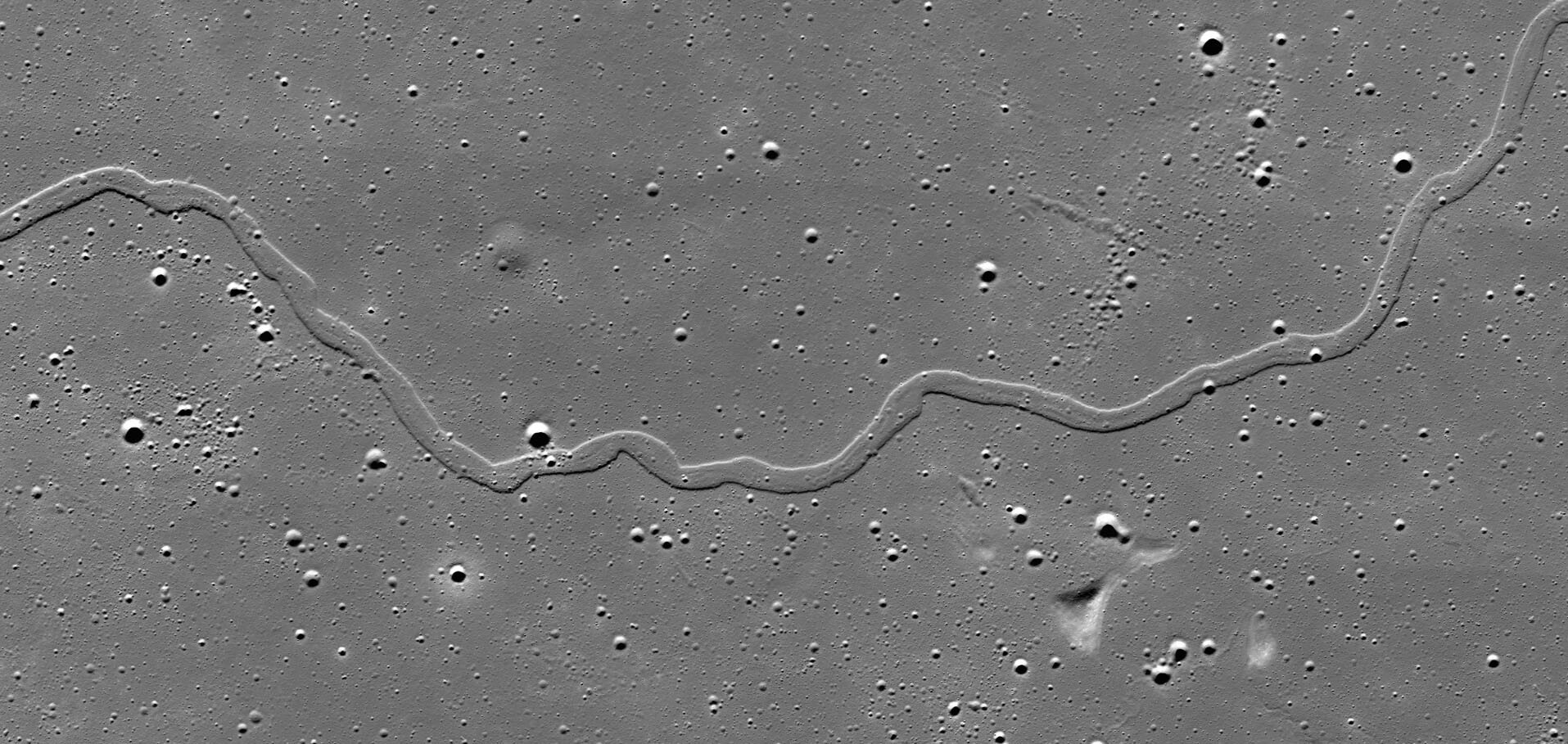
30
New cards
What are wrinkle ridges?
Narrow channel-like depressions in the lunar seas that can either be straight, smoothly-curved or sinuous; believed to be caused by lava flows.
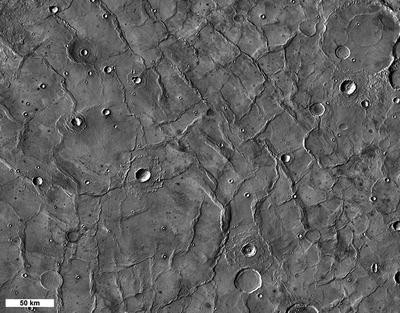
31
New cards
Why is there no significant atmosphere on the Moon?
Owing to its relatively small mass , the strength of the Moon’s gravity is only about 1/6 of that on the Earth.
32
New cards
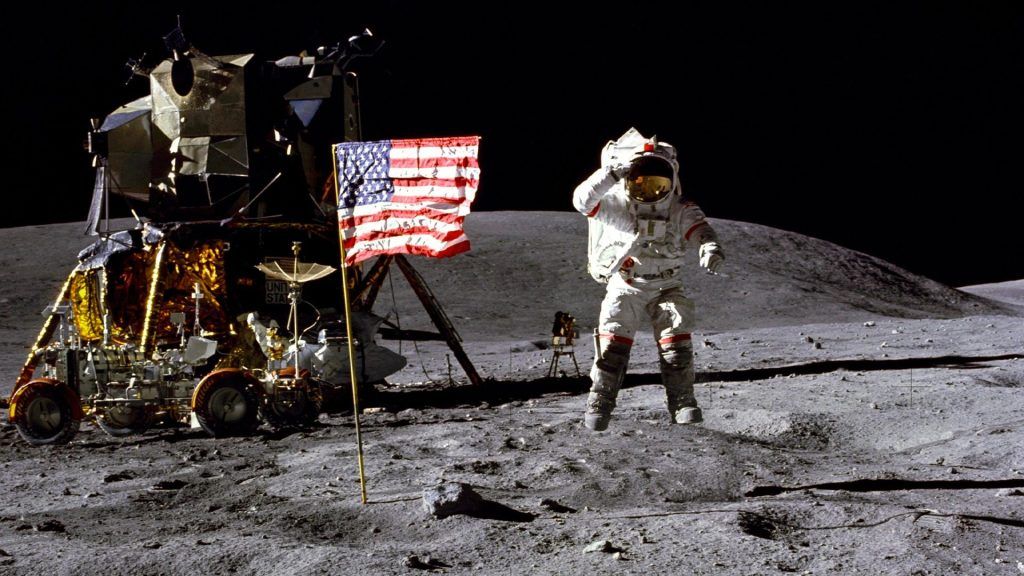
What were the objectives of the Apollo space missions?
* Landing a man on the Moon and returning them safely to Earth,
* collection of lunar soil and rock for analysis,
* deployment of ALSEP,
* winning the ‘race’ to the Moon against the Soviet Union.
* collection of lunar soil and rock for analysis,
* deployment of ALSEP,
* winning the ‘race’ to the Moon against the Soviet Union.
33
New cards
Describe the experiments carried out by ALSEP. (Give examples)
* Measure, analyse: structure of the Moon’s interior;
* composition and pressure of the lunar atmosphere;
* intensity and direction of the solar wind;
* composition and pressure of the lunar atmosphere;
* intensity and direction of the solar wind;
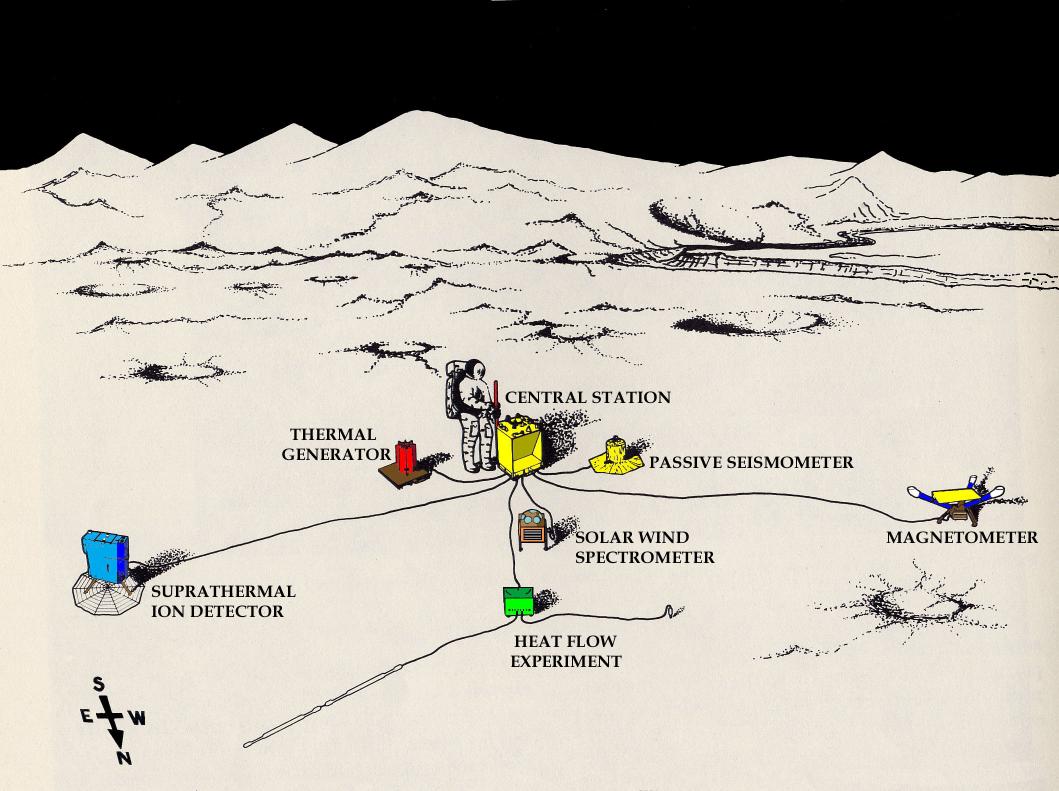
34
New cards
What are the four competing theories for the formation of the Moon?
1. Condensation or Co-Formation Hypothesis;
2. Capture Hypothesis;
3. Fission Hypothesis;
4. Giant Impact Hypothesis
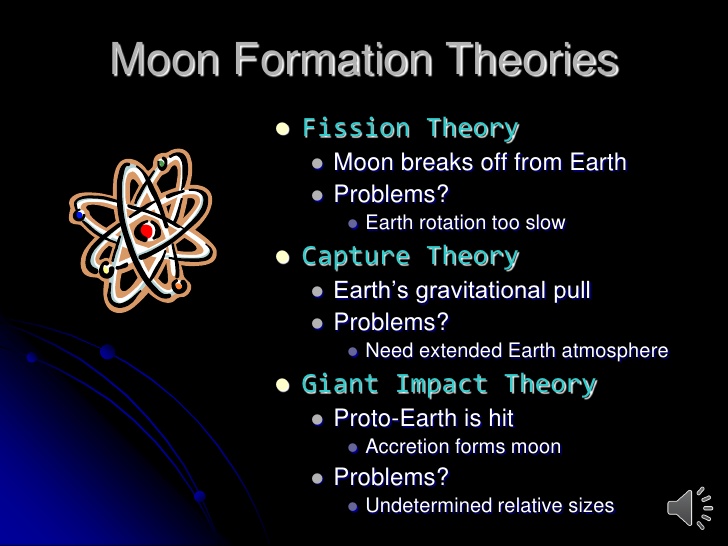
35
New cards
What is the evidence for the Giant Impact Hypothesis?
Relative abundance of isotopes of oxygen in moon rocks, lack of water and other volatile compounds in the lunar rocks, discovery of KREEP-rich rocks on the Ocean of Storms and Sea of Showers
36
New cards
How can we safely observe the Sun?
Indirect projection method in which a telescope / pinhole camera focuses an enlarged image of the Sun on a screen
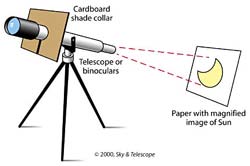
37
New cards
State the Sun’s diameter and distance from the Earth.
**Diameter** = **1.4 million km**.
**Distance** from the Earth = **150 million km**.
**Distance** from the Earth = **150 million km**.
38
New cards

What is the temperature of the Sun’s photosphere?
5800 K.
39
New cards
Describe the solar atmosphere and state the approximate temperature of the corona.
* Above the photosphere is the relatively thin chromosphere (\~2000 km) and extensive corona.
* Both are only observed during a solar eclipse.
* The corona is a glowing region of ionised gas with a temperature of 2 million K, which is hot enough to emit X-rays.
* Both are only observed during a solar eclipse.
* The corona is a glowing region of ionised gas with a temperature of 2 million K, which is hot enough to emit X-rays.
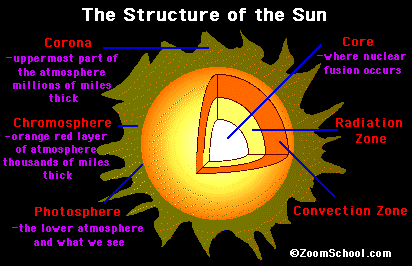
40
New cards

What is a sunspot?
A cooler area of the photosphere that corresponds to a strong localised magnetic field.
41
New cards
What are the two constituents of a sunspot?
**Umbra** = central darker region, about 2000 K cooler than the photosphere.
**Penumbra** = a lighter (less dark) surrounding area, with a temperature about 200 K cooler than the photosphere.
**Penumbra** = a lighter (less dark) surrounding area, with a temperature about 200 K cooler than the photosphere.
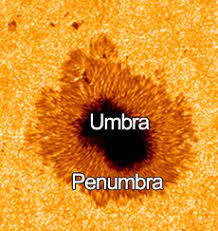
42
New cards
State what the Sun’s rotation period is, and how it can be determined.
The rotation period varies from @@25 days at the equator@@ to ^^36 days at the poles.^^ It can be determined by tracking the apparent movement of sunspots across the Sun’s surface.
43
New cards
What is a Butterfly Diagram?
The traditional way to study the positions of sunspots by plotting their latitude against time on a chart.
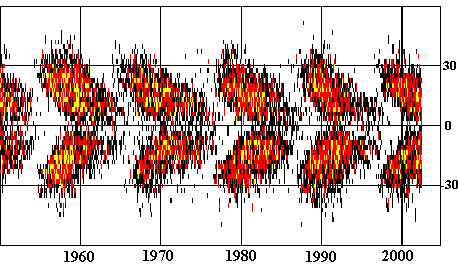
44
New cards
What is the solar cycle?
The relative number of sunspots follows a well-known **11-year pattern** called the solar cycle during which the number of sunspots increases to a maximum before falling again.

45
New cards
What was the Maunder Minimum?
Between the years 1645 and 1715, the Sun was relatively inactive and very few sunspots were observed; this period corresponds with a period of extremely cold winters in Europe.
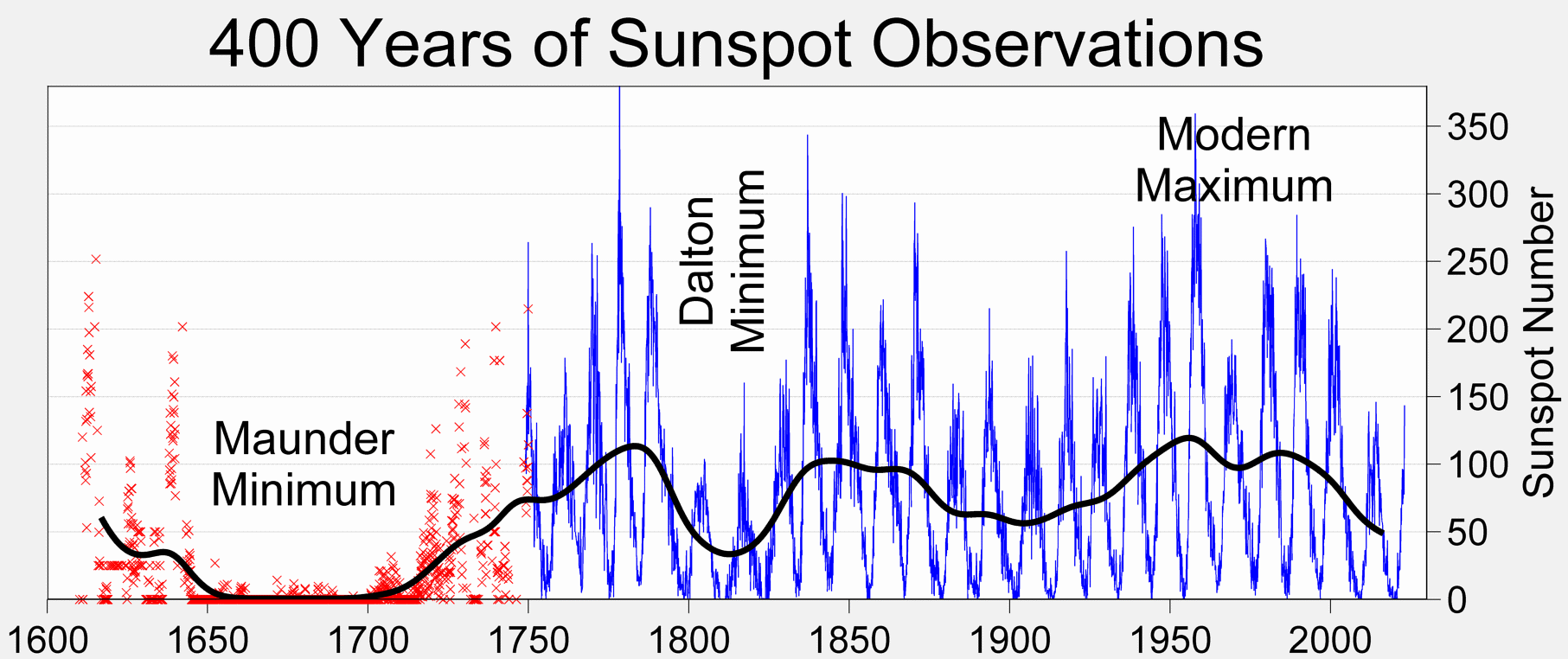
46
New cards
What process powers the Sun’s energy output?
Nuclear fusion.
47
New cards
Describe the process of nuclear fusion at the centre of the Sun.
The Sun’s core is around **15 million K**, which allows hydrogen nuclei (not atoms!) to fuse to form helium nuclei in a series of reactions called the proton-proton chain.
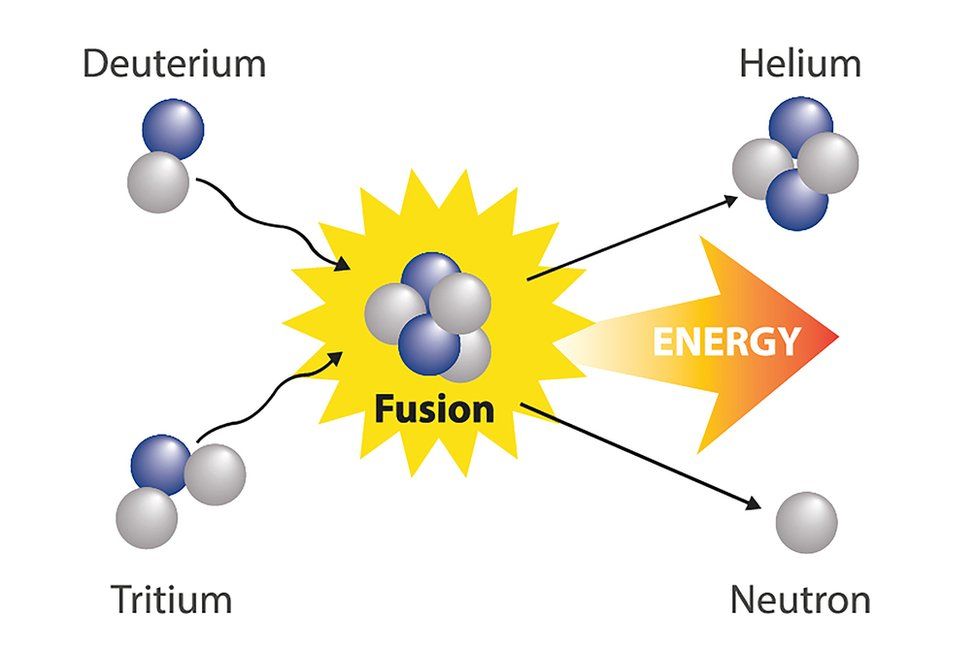
48
New cards
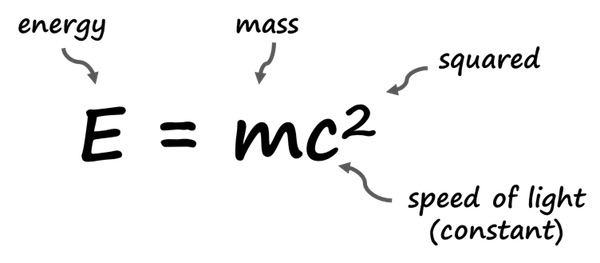
What is the significance of the equation E=mc^2?
During nuclear Fusion, matter (m) is ‘lost’ and converted into an equivalent amount of energy (E). c is the speed of light.
49
New cards
What solar features can you observe using an H-alpha filter that you can’t otherwise?
* **Solar prominences** (huge clouds of cooler gas in the Sun’s atmosphere),
* **filaments** (the same but appearing as dark silhouettes against the brighter photosphere),
* **solar flares** (sudden releases of energy),
* **sunspots**
* and the **chromosphere**.
* **filaments** (the same but appearing as dark silhouettes against the brighter photosphere),
* **solar flares** (sudden releases of energy),
* **sunspots**
* and the **chromosphere**.
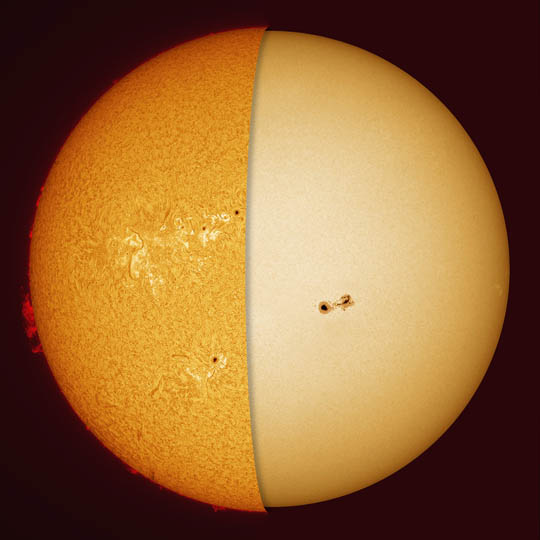
50
New cards
What is the solar wind?
A flow of charged particles streaming out from the Sun.

51
New cards
Why is it that we can experience solar eclipses?
Because (by coincidence) although the Sun is about 400 times further away from the Earth than the Moon, it is also 400 times larger in diameter.
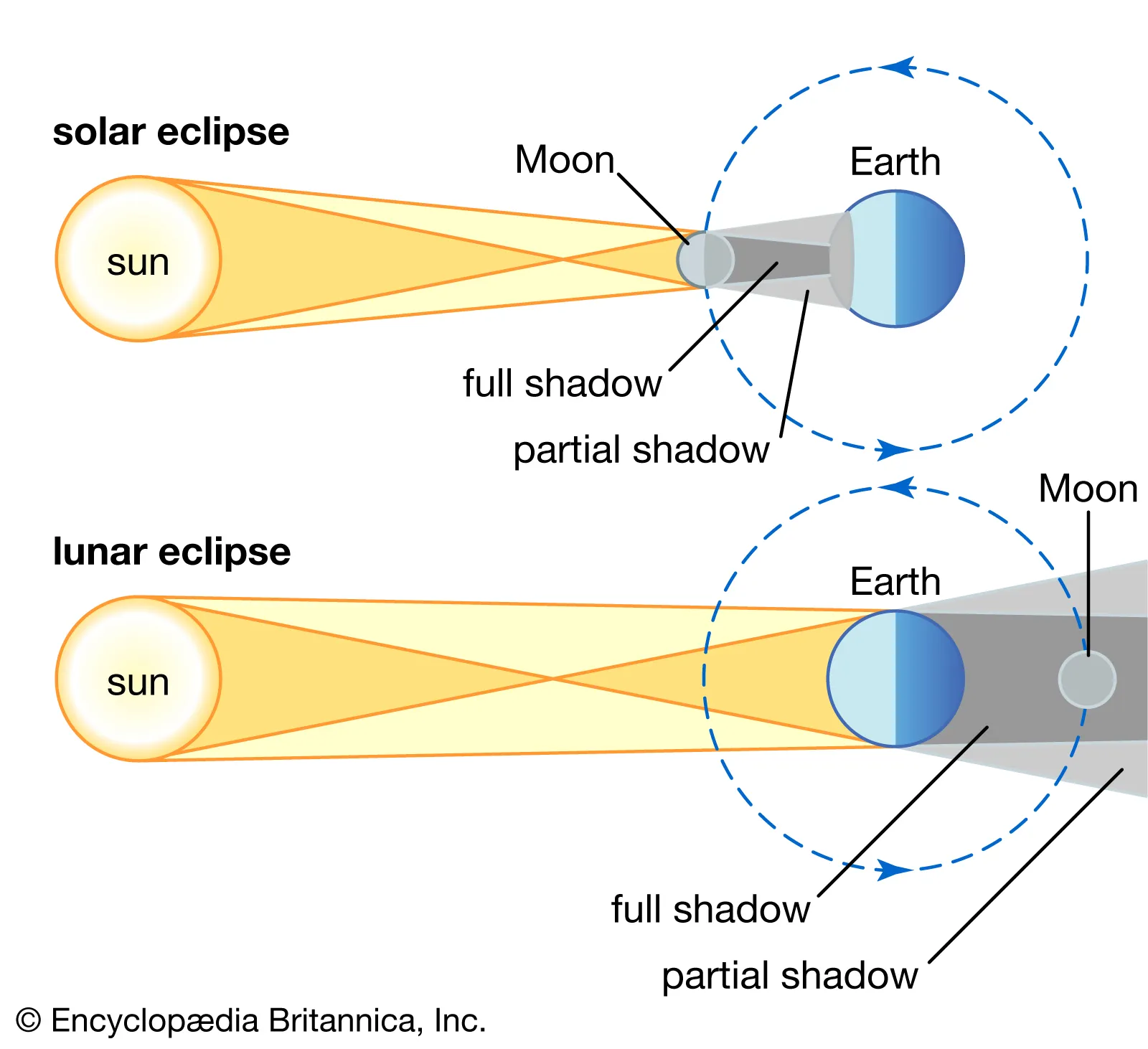
52
New cards
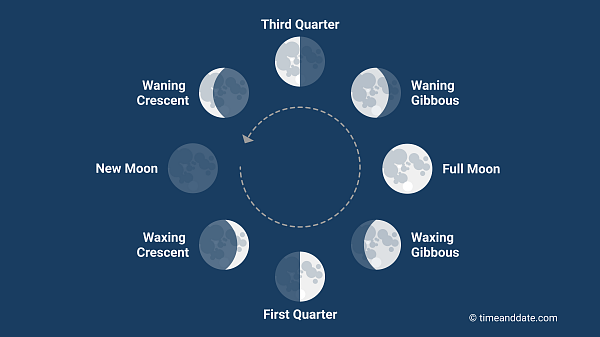
What is the period of a lunar phase cycle?
29.5 days.
53
New cards
Why is the lunar phase longer (by 2.2 days) longer than the orbit period of the Moon?
During the complete orbit of the Earth by the Moon, the Earth itself has moved significantly in its orbit of the Sun
^^– the extra time is needed to bring the Moon, Earth and Sun in alignment once more.^^
^^– the extra time is needed to bring the Moon, Earth and Sun in alignment once more.^^
54
New cards
What are Bailey’s Beads?
Small bright spots of sunlight caused by the Sun’s rays shining through valleys on the Moon at the beginning and end of totality.
When just one bead is visible, this is known as the Diamond Ring effect.
When just one bead is visible, this is known as the Diamond Ring effect.
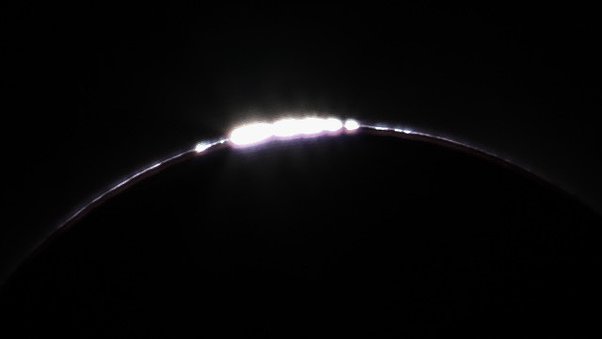
55
New cards
Why do solar eclipses not occur every new moon?
Because the plane of the Moon’s orbit around the earth is tilted slightly (by about 5°) to the plane of the Earth’s orbit around the Sun
56
New cards
What is a solar day?
* A solar day is exactly 24 hours.
* This is the time taken for successive crossings of the Sun (any given part of it) across the observer’s meridian.
* This is the time taken for successive crossings of the Sun (any given part of it) across the observer’s meridian.
57
New cards
What is a sidereal day?
* A sidereal day is the time it takes for the Earth to spin from East to West ;
* the time taken for successive crossings of a given star across an observer’s meridian.
* the time taken for successive crossings of a given star across an observer’s meridian.
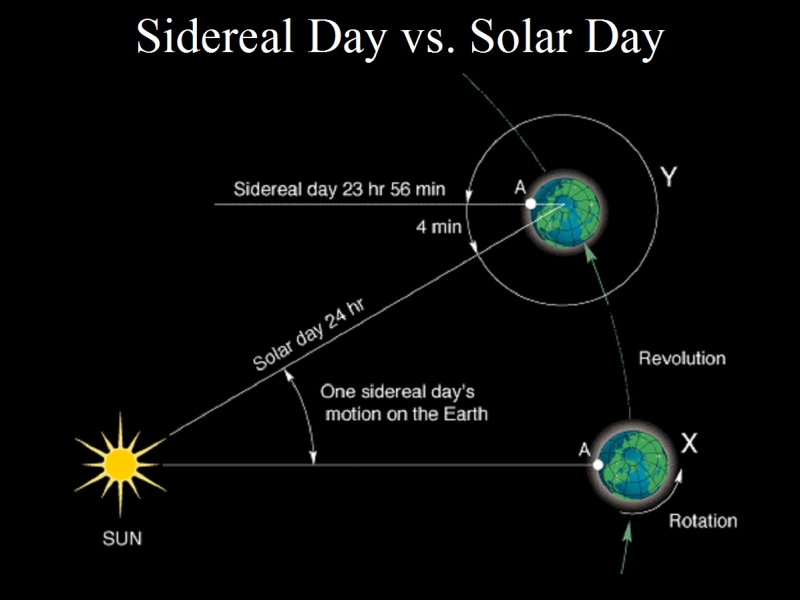
58
New cards
Why is a solar day 4 minutes longer than a sidereal day?
The extra 4 minutes are needed because during one complete Earth-rotation, our planet has moved slightly in its orbit around the Sun, and it must rotate for an extra 4 min to allow the Sun to return to the same position in the sky
59
New cards
What is apparent solar time?
Apparent solar time is the time that is shown on sundials
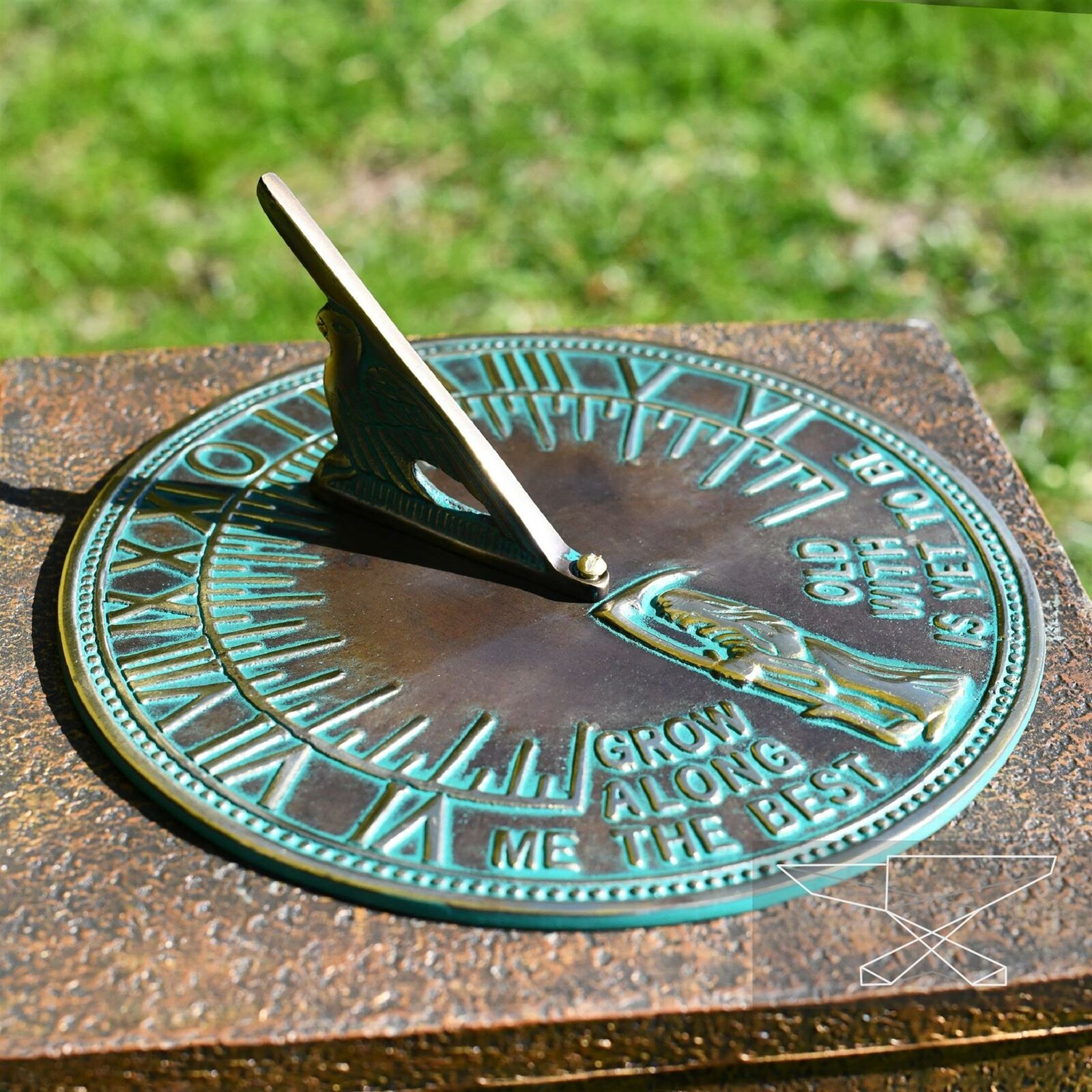
60
New cards
What is the mean Sun?
An imaginary body travelling eastward along the celestial equator, at a rate of motion equal to the average rate of the real Sun along the ecliptic.
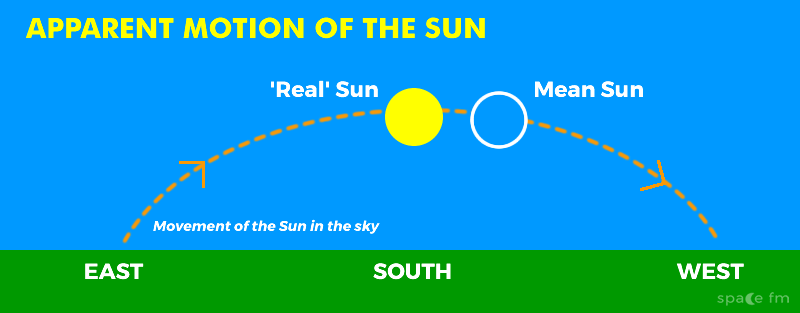
61
New cards
What is the Equation of Time?
EOT \= apparent solar time – mean solar time (GMT)
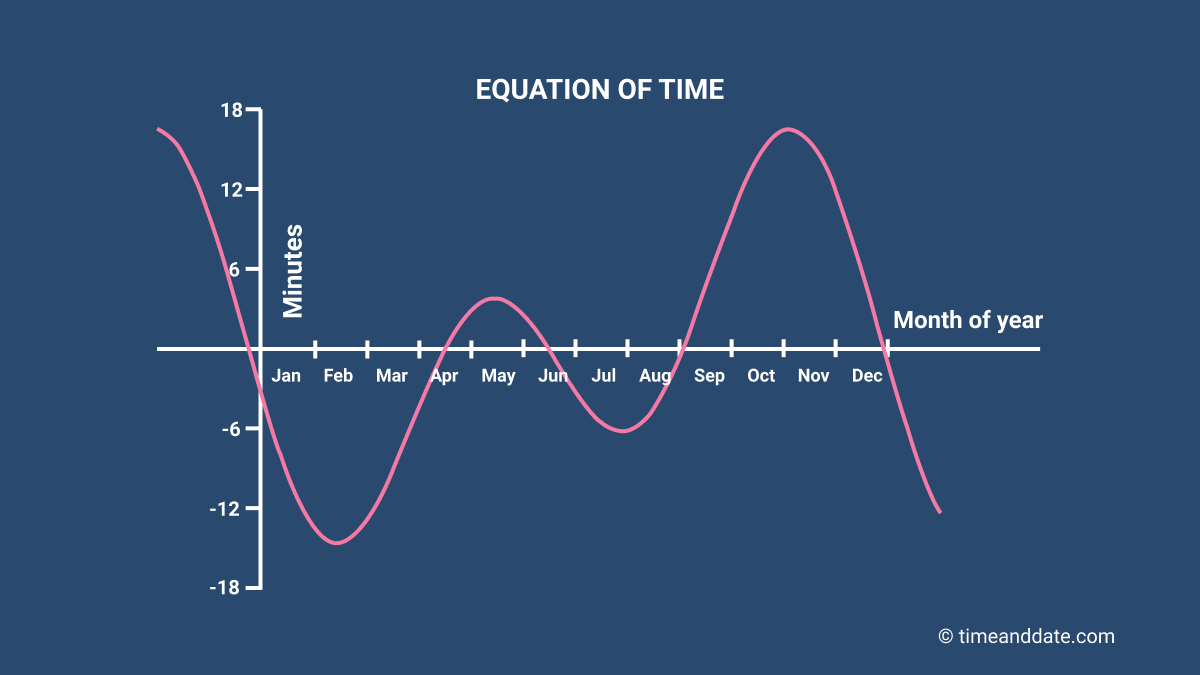
62
New cards
What is an aurora?
* Aurorae are caused by electrons from the solar wind that have been accelerated to high speeds in the Earth’s magnetic field.
* These electrons excite atoms and molecules of oxygen and nitrogen in the upper atmosphere.
* As the atoms or molecules de-excite, they emit light at certain wavelengths that are characteristic of the element concerned.
* These electrons excite atoms and molecules of oxygen and nitrogen in the upper atmosphere.
* As the atoms or molecules de-excite, they emit light at certain wavelengths that are characteristic of the element concerned.
63
New cards
Where on Earth are aurorae likely to be observed?
Generally only visible from high latitudes, but can be observed from lower latitudes such as those in the UK when solar activity is very high.